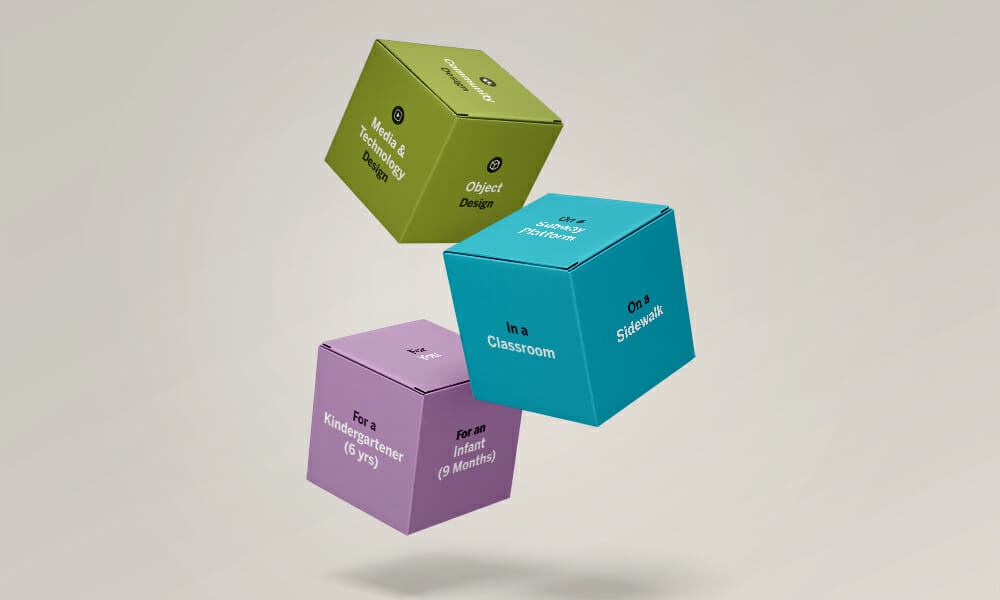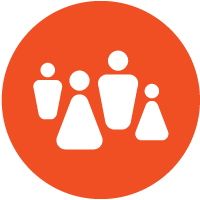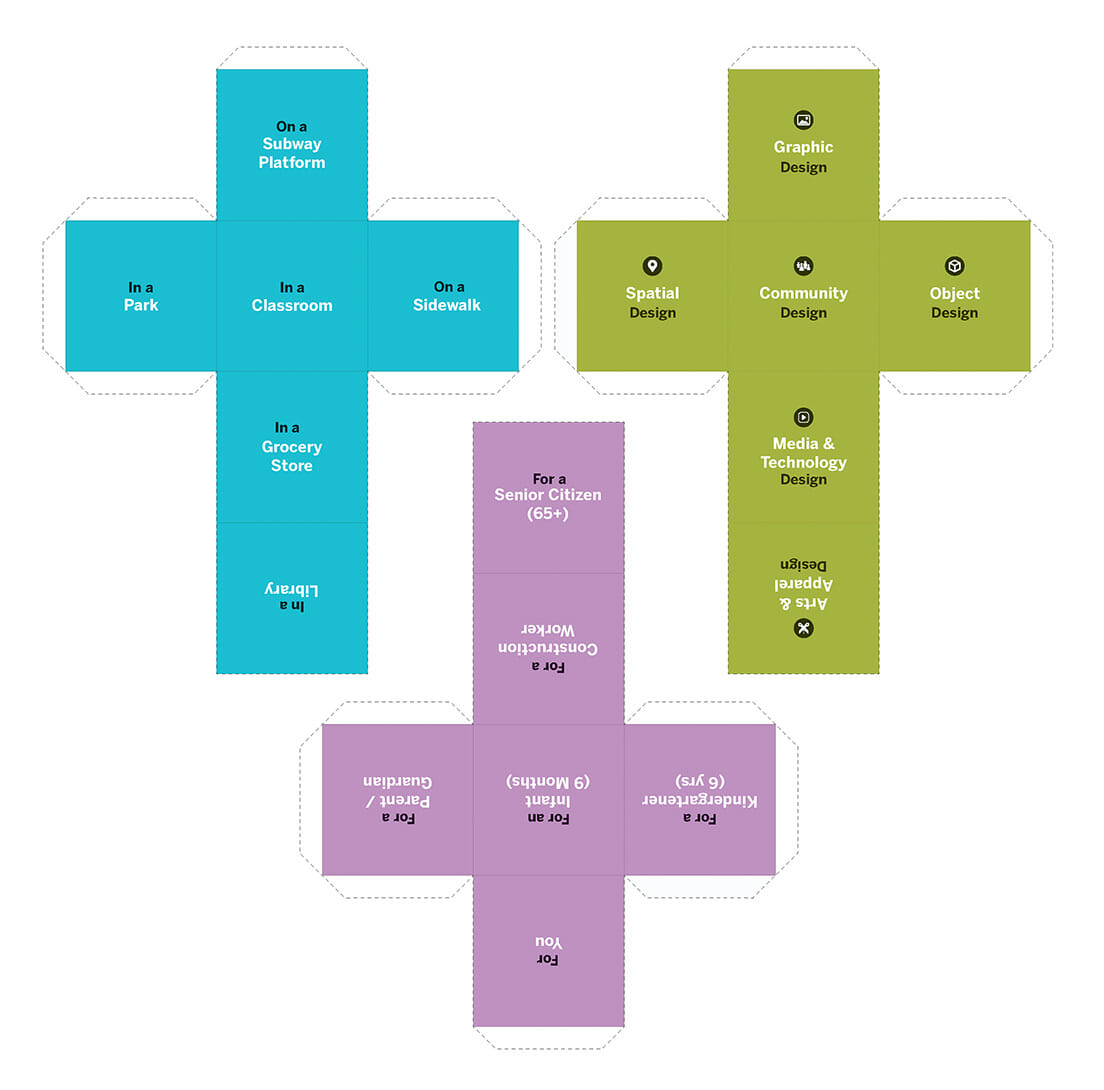Design Field Dice
Design Activity (6-12 Grade)
Learners will create several concept ideas using randomly selected categories. There are up to 216 combinations!

Learners will…
- Name the seven design fields along with a real world example of field
- Critique their own or a partner’s designs
- Design 3-5 concepts within their selected design field
Share your creations on social media with #DesignTogether and we’ll feature examples in our Design Together online gallery.
INSTRUCTIONS
- Before starting, download the template, print out, and make the dice.
- Start by having a conversation about the design fields (use the definitions below). Make sure to ask your learner to name an example of each field in their own daily lives.
- Hand your learner a drawing surface and utensil. Think pencils, markers, paint, tablets, paper, whiteboards.
- Have your learner roll each die and write down their results.
- Now it’s problem finding time! Have your learner think of as many problems as possible for their audience in the place they rolled in 5 minutes.
Example: Infants on a Subway Platform: It’s loud (hurts their ears!), Nothing cool to look at, Scary things moving quickly! - Challenge your learners to create solutions to the problems they came up with in step 5. Let them know to come up with 3-5 solutions for as many of the problems as they can, including a sketch/prototype of the design. Give them at least 30 minutes for this task.
- Instruct them to choose their top two ideas to present to you or a partner. Ask them to prepare a short presentation about their designs, including a section that addresses why their designs would benefit their audience.
- Between each presentation, give your learner feedback on their design, phrased in questions.
Examples: This is great! Looking at it now, what would you change? Can this be used by several people at once? How do you think we could build this? Who should we ask more information from? - Repeat this cycle as many time as you’d like!
- Debrief with them. Ask them about their experience and which field most closely aligns with their interest.
DESIGN FIELDS

Arts & Apparel
Art and apparel design aims to be aesthetically pleasing, expressive, and reflective of cultural and social trends. Creators working in fields like printmaking, textiles, decorative arts, and clothing design must anticipate shifts in consumer tastes and be able to adapt their materials, brand, and processes to changing markets.

Community
Community design increases the opportunity for a diverse group of participants to be shared visionaries and decision makers in their communities. Including projects like public housing, parks, community gardens, and markets, community-driven design relies on the power of collective thought and inclusive planning.

Graphics
Graphic designers create and combine symbols, images, and text to visually represent ideas and messages. Common applications can include rebranding a product or idea, developing signage to improve the way people navigate public spaces, or even creating the illustration on the sign you’re looking at right now.

Objects
Designing objects includes creating, fabricating, and styling manufactured goods—everything from small household products to large-scale items like automobiles or medical equipment. Designers must be thoughtful planners and consider the look, mechanics, comfort, accessibility, marketing, branding, sustainability, and sales for any object.

Media & Technology
Media and technology design deals with how we share and experience information. From the online social platforms and navigation systems we use daily, to advanced technology applied in healthcare and educa-tional systems, media-based technology is creating a more connected, informed, and accessible world.

Spatial
Architecture, landscape design, interior design, urban planning, and pub-lic art are not only about aesthetics; they shape how we see and navigate the world. Whether working on a home, office, or community project, spa-tial designers must ensure that the values and experiences of the people using a space are reflected in the details of its design.

Systems & Strategy
Systems design is about creating big picture change, and involves mas-terminding strategic plans based on understanding pieces of a larger puzzle. Designers in this field analyze and tackle challenges related to things like business growth, education, game play, health care, city plan-ning, or climate change.

